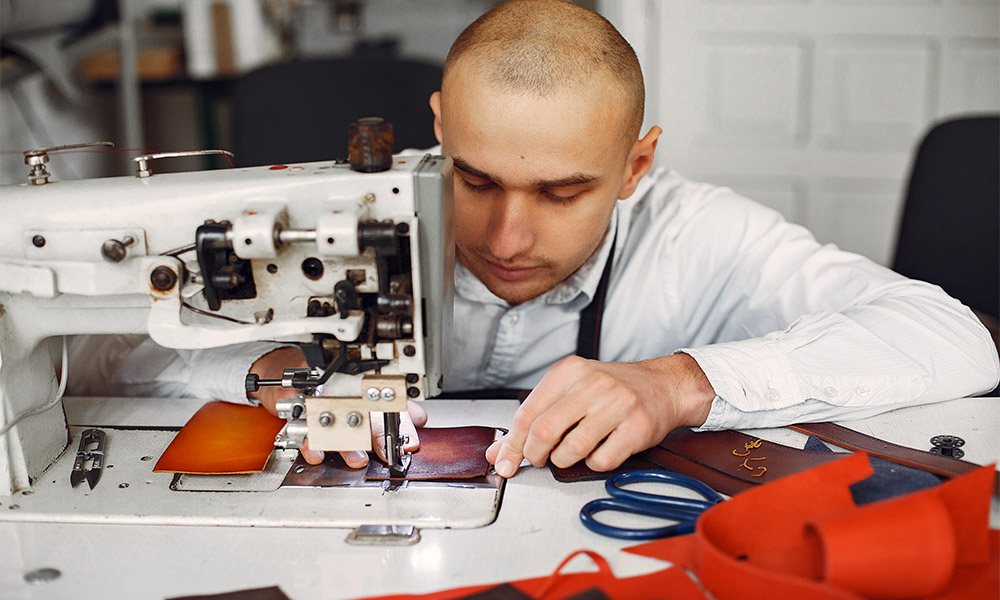Creating garments that stand the test of time requires understanding which nahttypen deliver superior durability. The strength and longevity of your seams determine whether your handmade pieces last years or fail after a few washes. Different seam types offer varying levels of durability, making seam selection crucial for long-lasting construction.
Understanding Seam Durability Factors
The durability of nahttypen depends on several key elements that work together to create strong, lasting connections between fabric pieces. Thread quality plays a fundamental role, with polyester and cotton-wrapped polyester threads offering excellent strength retention over time. The thread’s fiber composition directly affects how well seams hold up under stress, washing, and daily wear.
Fabric weight and weave structure also influence seam durability. Heavy fabrics like denim and canvas require robust nahttypen that can handle the material’s thickness without breaking down. Conversely, lightweight fabrics need seams that provide strength without adding bulk or causing puckering that weakens the construction.
Stitch density affects seam longevity significantly. More stitches per inch generally create stronger seams, but excessive density can perforate delicate fabrics and create weak points. Finding the right balance ensures optimal durability for each fabric type and intended use.
Strongest Nahttypen for Maximum Durability
Flat-Felled Seams
Flat-felled seams represent the gold standard for durable construction. These seams enclose raw edges completely while creating four layers of fabric thickness at the seam line. The double-folded construction distributes stress across a wider area, preventing tearing and fraying. Manufacturers use flat-felled seams extensively for workwear, jeans, and outdoor gear where durability takes priority over decorative appearance.
French Seams
French seams provide exceptional durability for lightweight and medium-weight fabrics. The enclosed construction prevents fraying while creating a clean finish that withstands repeated washing and wearing. The double-stitching process creates redundancy that maintains seam integrity even if one line of stitching fails.
Serged Overlocked Seams
Professional serged seams offer outstanding durability for knit fabrics and stretchy materials. The multiple threads and overlock construction prevent unraveling while maintaining flexibility. These seams stretch with the fabric without breaking, making them ideal for activewear and garments requiring movement.
Fabric-Specific Durability Considerations
Heavy Weight Fabrics
Denim, canvas, and upholstery fabrics demand specialized nahttypen approaches for maximum durability. Heavy-duty threads, larger needle sizes, and reinforced seaming techniques prevent needle damage and thread breakage. Double-stitched seams with topstitching provide additional strength for high-stress areas like pocket attachments and waistbands.
Stretch and Knit Materials

Knit fabrics present unique durability challenges because seams must stretch without breaking. Twin needle seams, stretch stitches, and serged finishes accommodate fabric movement while maintaining seam integrity. Using appropriate thread types that stretch with the fabric prevents seam failure during wear.
Delicate Fabrics
Silk, chiffon, and other delicate materials require careful nahttypen selection to avoid damaging the fabric while ensuring durability. Fine threads, smaller needles, and gentle seaming techniques protect delicate fibers while creating lasting connections. French seams work particularly well for these materials, providing strength without bulk.
Reinforcement Techniques for Enhanced Durability
Stress Point Strengthening
High-stress areas like armholes, crotch seams, and pocket corners require additional reinforcement to prevent failure. Bartacking, stay-stitching, and interfacing applications distribute stress and prevent tearing. These reinforcement techniques significantly extend garment life in areas subjected to repeated strain.
Seam Finishing Methods
Raw edge finishing prevents fraying and extends seam life considerably. Pinked edges, bound seams, and serged finishes each offer different durability benefits depending on fabric type and intended use. Proper finishing techniques protect seam allowances from washing damage and everyday wear.
Testing and Quality Assurance
Durability testing helps determine which nahttypen perform best for specific applications. Seam strength testing, wash fastness evaluation, and wear simulation provide valuable data about long-term performance. Home sewers can perform simple tests by creating sample seams and subjecting them to stress testing before committing to full garment construction.
Professional manufacturers use standardized testing methods to ensure seam durability meets industry requirements. These tests measure seam strength, stretch recovery, and resistance to repeated washing and drying cycles.
Maintenance for Long-Lasting Seams
Proper care extends the life of even the most durable nahttypen. Following appropriate washing temperatures, avoiding harsh detergents, and proper pressing techniques preserve seam integrity over time. Understanding fabric care requirements helps maintain seam strength throughout the garment’s lifetime.
Regular inspection and prompt repair of loose threads or small tears prevents minor issues from becoming major failures. Addressing problems early maintains overall garment durability and extends useful life significantly.
Conclusion
Selecting appropriate nahttypen for durability requires understanding fabric properties, intended use, and stress factors that affect seam performance. Flat-felled seams, French seams, and properly executed serged seams provide superior longevity when matched correctly to fabric type and application. Reinforcement techniques, proper finishing methods, and appropriate maintenance practices further enhance seam durability. Whether creating everyday garments or specialized items requiring exceptional strength, choosing the right seam type and construction methods ensures your handmade pieces withstand years of use while maintaining their structural integrity and appearance.






